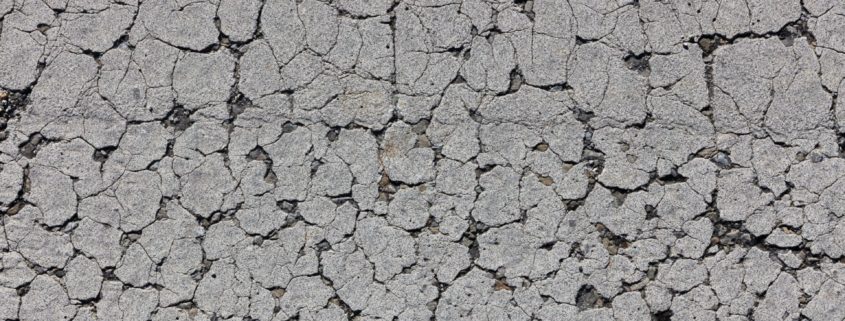Asphalt Repair and Crack Filling
Every driveway eventually develops cracks, patches or pits. While they are natural signs of wear and tear, they can be unsightly and hasten your driveway’s deterioration. In America, asphalt is the driveway material that is most commonly used and is what you often see road workers laying on roads.
An asphalt driveway consists of a mixture of stone and sand plus a slurry of asphalt, which is a petroleum-based compound that resembles tar. If you notice your driveway or parking lot has standing water after rain, it’s a solid sign that the asphalt and the underlying foundation have cracks or patches.
Standing water damages and weakens the foundation by allowing it to seep into the asphalt. If you don’t address cracks or patches immediately, this can result in a costly driveway or parking lot asphalt repair.
How To Fix Driveway Cracks or Patches
A pourable or tubed asphalt patch product can be used to patch cracks that are up to 3/4 inch wide. To apply tubed asphalt, you need a caulk gun. Before you begin with anything, be sure to check the weather and schedule the driveway or parking lot asphalt repair on a sunny day with no rain forecast for at least 24-48 hours after.
Asphalt Crack Repair Steps
- Clean the Surface
To prepare for a driveway repair, clear the crack of all debris and vegetation using a wire brush, screwdriver or trowel tool. Then, wash it down with a hose or power washer to remove any leftover debris. Finally, let the crack dry before continuing the process.
- Prep the Cracks
For hairline cracks, it’s essential that you widen them with a diamond wheel. It’s a tedious process, but it’s necessary for a proper asphalt parking lot repair. Unless you use a diamond wheel and an angle grinder to widen them, the asphalt crack repair won’t last.
- Add the Filler
If you’re using bottled fillers, ensure the material is mixed well by shaking it. Tubed products, on the hand, don’t need mixing. Just cut the spout to your desired width, ensuring the spout width is less than the crack. Next, fill the crack to the level of the adjacent pavement. Then, even out the crack filler so that it reaches the surrounding pavement’s height.
It should be troweled smoothly and left to dry overnight. Apply a second layer if the depression is still there the following day.
Asphalt Patch Repair Steps
- Clean the Surface and Pits
Similar to cracks, you must clean the pit with a brush and hose it down. For an asphalt parking lot repair to last longer, make sure not to leave any loose debris.
- Fill the Patches or Pits
Use a trowel to push the asphalt driveway patch filler into the holes and fractures. After that, use an old broom to remove the streaks.
- Add More Asphalt to Expand and Level the Area
To ensure the surface is smooth, add more filler material to the patched area and widely spread it with a floor squeegee. Pitted spots can form in asphalt driveways due to repeated freeze and thaw cycles, coolant contamination and motor oil.
The filler could soak into the crack or pit when curing and require a second layer. Before applying a second coat, wait 24 hours for it to dry. Additionally, you must wait at least 24 to 48 hours for the material to dry before driving or walking over the repaired area.
Get Help From The Professionals
Consult with a skilled paving contractor to guarantee the best material and service for your parking lot asphalt repair. Fireman’s Paving Contractors specializes in asphalt repair with over 14 years of experience. To schedule a FREE consultation, call The Paving Contractor You Can Trust at 817-900-6947.









Asphalt repair is a rather complicated process, for sure. It takes work to work your way around a project like this.
This website offers clear and helpful information about asphalt repair and crack filling. It simplifies the process, making it easy for anyone to understand. The step-by-step guidance is valuable for DIY enthusiasts, saving money and preventing further damage. It’s a reliable resource for maintaining driveways and walkways.